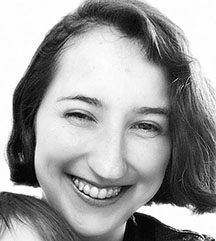Coronal Hole Evolution: Theory, Simulations, and Observations
Emily Mason
Research Scientist
Predictive Science Inc
Wed, February 22, 2023 - 4:00 PM
Presented via Zoom
ID: 81983710257
passcode: 575422
Join by phone
(US) +1 312-626-6799
passcode: 575422
https://cua.zoom.us/j/81983710257?pwd=dnZxeWxUcks3N1NiWXZtMWtQSGowUT09
 Coronal holes are defined as regions on the Sun where the magnetic field is only rooted in the Sun at one end, and are termed “holes” because they were first observed in X-rays, where the low plasma density makes them appear dark. These regions are very persistent, often lasting months or even years. The fast solar wind originates here, and it is theorized that the slow solar wind may emanate from coronal holes’ complex boundary regions, where the open and closed magnetic fields interact. In this talk, I will cover some of the history and theory of coronal hole physics. I will present my work with Vadim Uritsky analyzing the structure of coronal hole boundaries, as well as the implications of Predictive Science’s recent time-dependent thermodynamic magnetohydrodynamic model of the Sun, which shows coronal hole evolution for a full month.
Coronal holes are defined as regions on the Sun where the magnetic field is only rooted in the Sun at one end, and are termed “holes” because they were first observed in X-rays, where the low plasma density makes them appear dark. These regions are very persistent, often lasting months or even years. The fast solar wind originates here, and it is theorized that the slow solar wind may emanate from coronal holes’ complex boundary regions, where the open and closed magnetic fields interact. In this talk, I will cover some of the history and theory of coronal hole physics. I will present my work with Vadim Uritsky analyzing the structure of coronal hole boundaries, as well as the implications of Predictive Science’s recent time-dependent thermodynamic magnetohydrodynamic model of the Sun, which shows coronal hole evolution for a full month.
Refreshments served at 3:45 PM
If you have any questions about the Colloquium Series or would like to make a donation please contact the Physics Department, cua-physics@cua.edu or (202) 319-5315.
